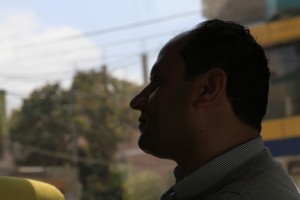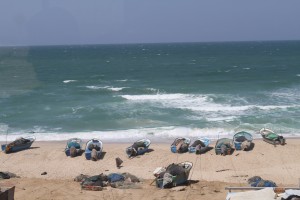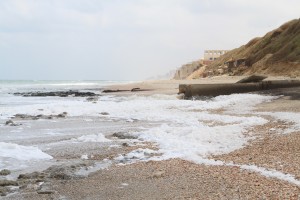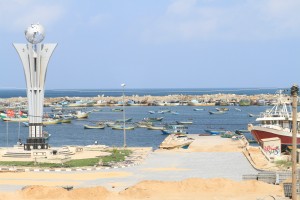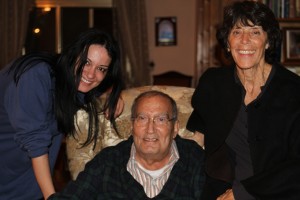Poverty, isolation just part of living under siege in Gaza, by Gerri Haynes
(Gerri Haynes, former president of Washington Physicians for Social Responsibility, has returned to Gaza with a delegation of doctors, nurses and others interested in helping the people there. Gerri will be sending back reports.)
Day Six in Gaza
Hospital Clinics and surgeries are closed on Fridays in observance of faith. We traveled by bus with friends from Gaza for a tour of this imprisoned land. Bordered by Israel, Egypt and the sea, Gaza has great beauty. Hamada Bayieri of UNOCHA (United Nations Office for the Coordination of Humanitarian Affairs) joined us for two hours to tell us about the challenges of living here. He welcomed us by saying that the people of Gaza have a feeling of isolation and that we are a contact to let people know they are not alone.Everything we witnessed demonstrated effects on the physical and mental health of the people of Gaza. Hamada reviewed the current statics of
living under siege, noting that 38 percent of the population lives in abject poverty. Fishing used to supply a primary source of protein – now most of the 3,500 fishermen do not fish. The Oslo Accords guaranteed a ten nautical mile border for Gaza, but Israel imposes a border at three nautical miles – making access to clean water and large fish impossible. Hamada noted that this lack of access is not only a matter of loss of “right,” it is a matter of loss of human dignity,Hamada commented that the people here continue to be resilient, but noted that crowding, poverty, lack of access to building materials and rising population density (increased demand in
the face of shrinking resources) create an atmosphere where gender-based violence is increasing and people consume most of their day trying to cope with the lack of life’s survival essentials. Eighty percent of the people in Gaza are aid-dependent.We stopped by the Sea to observe a large pipe carrying part of the 80 million liters of partially and fully untreated sewage into the Mediterranean each day. Walking on the shore, the smell was not pleasant, but the possibilities for the Gaza shoreline were obvious. The Mediterranean is a magnificent sea – the shoreline here is easily accessible. If the water could be cleaned and the sea could be freely
used, both the access for the people to the sea and the development opportunities are great. As it is now, the Mediterranean is polluted and not safe for swimming or fishing (as noted previously).Along the long land border with Israel, Israeli guard towers and the Wall were obvious. The area known as the “NO GO” zone is comprised of one third of all the good crop land in the Strip – this is 17 percent of Gaza’s 360 square kilometers. Israel guards this area with guns and even though the border was to be narrowed after the November 2012 attacks on Gaza, this narrowing has not happened. Farmers venturing into the restricted zone are shot. Since
November, four people have been killed and more than 100 wounded in this border zone.We observed some of the areas where goods used to enter Gaza from Israel. Now, there is only one crossing for materials and Hamada reported that since the 23rd of March this year, even this crossing has been closed more than 70 percent of the working days. This heightens the need and use of the tunnels between Egypt and Gaza. After Hamada left us, we ventured into the tunnel area at the Rafah border. The tunnels employ about 7,000 workers – many of them 15- 17 years old. Since the beginning of this year, ten people have been killed in tunnel collapses. We were able to enter the mouth of one tunnel, but access is strictly guarded.
Following a tour through the Rafah border (where passage to Egypt is severely monitored and not freely given), we returned to Gaza City.
A visit highlighted our evening! After receiving medical and surgical care in Jerusalem, our dear friend, Eyad Sarraj, has returned to his home in Gaza. We enjoyed a visit with him and knew again the wisdom of this founder of the Gaza Community Mental Health Programme.
RSS feed for comments on this post. TrackBack URI
